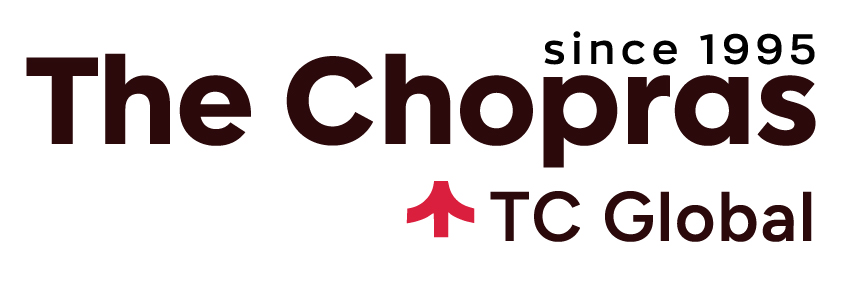If you are researching to choose between two UC schools – UC Santa Barbara vs UC Davis, then you’ve come to the right place. Two highly reputed schools under the University of California system, UCSB and UC Davis, are known for their excellent academic programs, research opportunities, and extracurricular activities. But how does one choose between the two? Are they two campuses of the same university, or do they function separately? What programs are they known for? We explore it all here.
A quick first-look:
UC Santa Barbara (UCSB) and UC Davis (UCD) differ primarily in their academic focus, campus environment, and location.
UCSB is renowned for its strong engineering, physics, and arts programs, with a particular emphasis on research in fields like marine biology and environmental science. It boasts a picturesque coastal campus, contributing to a vibrant student life centred around beach culture and outdoor activities.
In contrast, UC Davis is known for its strengths in agriculture, environmental science, and veterinary medicine, reflecting its origins as an agricultural school. Located in a more rural setting, UC Davis offers a larger campus focusing on sustainability and hands-on research opportunities in its extensive agricultural facilities. While UCSB is more research-intensive in specific sciences, UCD offers a broader range of applied sciences with strong ties to California’s agricultural industry.
Overview of UC Davis and UC Santa Barbara
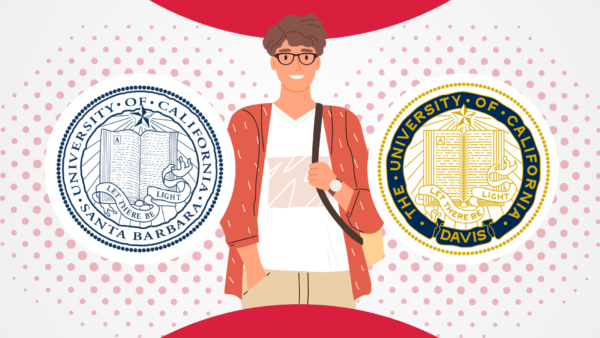
Even though both schools are part of the University of California system, they offer varied student experiences, primarily because of their size and location.
The northernmost campus of the UC system, Davis, has an extensive campus spanning over 5,000 acres near Sacramento. World-renowned for its programs in agriculture, medicine, veterinary sciences, and engineering, UCD is considered a Public Ivy, ranking third among UC schools after UC Berkeley and UCLA. Its expansive, rural campus supports extensive research opportunities across various disciplines.
UC Santa Barbara is relatively smaller, located on the picturesque coastline of Southern California. Known for its collaborative academic environment and rigour, especially in physics, material sciences, chemistry, marine sciences, and social sciences, this institution provides the ideal set-up for students to balance academics with extracurricular and outdoor activities.
Brief History and Background
University of California – Santa Barbara
The University of California Santa Barbara’s history dates back to the 1890s. It began as a manual training school and a teacher’s college. By 1944, it was adopted into the University of California system, and by 1958, it became a general campus offering four-year undergraduate and graduate degrees.
Although originally established in the Riviera in downtown Santa Barbara, the campus moved in 1954 to Goleta, on a site previously used as a World War II Marine Air Station base. Over the years, the campus grew to include the College of Letters & Science, School of Engineering, School of Education, and College of Creative Studies.
Renowned for its programs in marine sciences, environmental sciences, economics, social sciences, and communication, among other disciplines, UC Santa Barbara ranks 35th in the country according to metrics published by the US News and World Report and 178th globally, according to QS World University Rankings 2025.
University of California – Davis
Also referred to as UCD, UC Davis, or just Davis, the University of California, Davis, is a public, land grant research university in Davis, California. It is a member of the University of California system that also includes UC Berkeley, UCLA, UC San Diego, UC Santa Cruz and five other institutions spread throughout the state. UC Davis is the northernmost of all the UC campuses.
Even though the school originally opened in 1908, it was primarily set up as the agricultural and science-based instruction extension of UC Berkeley. Over the years, it grew to include the Division of Agricultural Engineering, Division of Chemistry, School of Veterinary Medicine, and a graduate school. By 1951, the College of Letters and Science was established, and, in less than a decade, in 1959, it became a general campus under the University of California System.
Still renowned for its programs in agriculture and veterinary medicine, Davis is also known for its medical research centre, engineering school, biological sciences, and geology program. UCD ranks 28th in the country (US News and World Report 2024) and 130 in the world (QS World University Ranking 2025).
Key Statistics and Rankings
Here is a snapshot view of UC Santa Barbara and UC Davis.
| UC Santa Barbara | UC Davis | |
| Ownership | Public | Public |
| Campus | Santa Barbara, CA | Davis, CA |
| Nickname | Gauchos | Aggies |
| Mascot | Gaucho, the Argentine Cowboy | Gunrock, the Mustang |
| U.S. News National Rank 2024 | 35 | 28 |
| QS World University Rank 2025 | 178 | 130 |
| Undergraduate Student Body | ~ 23,000 | 31,797 |
| Graduate Student Body | ~ 3,000 | ~ 6,800 |
| % of International Enrollment | ~ 18% | ~ 15% |
| Average Acceptance Rate | ~ 26% | ~ 40% |
| Student-to-Faculty Ratio | 18:1 | 21:1 |
| Number of Undergraduate Programs | 90+ majors | 107 majors |
| Number of Graduate Programs | 50+ | 101 |
| Research Expenditure | About $240 million | $1 billion + |
| Number of Athletic Teams | 19 NCAA Division I teams | 25 NCAA Division I teams |
| Number of Clubs and Student Organisations | 500+ | 800+ |
| Colours | Navy Blue and Gold | Aggie Blue and Gold |
UC Santa Barbara vs UC Davis: Academic Comparison
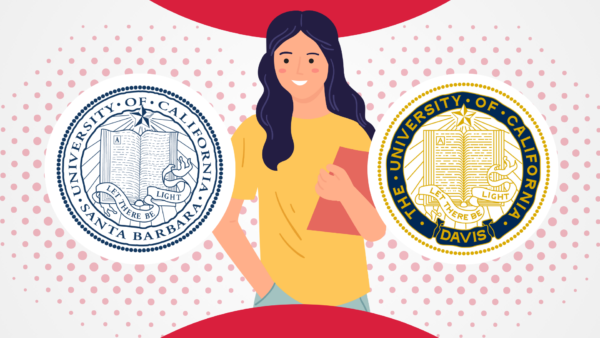
The first point of discussion when answering the question, “Is UCSB or UC Davis better?” is academics. The undergraduate or graduate courses that they offer, their choices and flexibility, ranking, degrees and class sizes, academic calendars, research facilities and budgets can become important factors in deciding which college is best suited for you.
Undergraduate Programs
Program Options and Focus Areas: With both being state funded schools, they are relatively large institutions offering around 100 majors to choose from, ranging from humanities, social sciences, and STEM courses. Even the difference in the number of majors is marginal.
Davis is known especially for its programs in life sciences, especially in the areas of neurobiology and other biomedical sciences, veterinary sciences, medicine, agricultural sciences, nursing, psychology, engineering and computer science. UC Santa Barbara has a better reputation for its marine sciences, environmental sciences, material science, chemical engineering, sociology, psychology, and communication programs.
If you are looking at overall rankings, UCD is marginally ahead of UCSB, ranking 28th in the country when compared to Santa Barbara’s 35th. Even in terms of reputation, they are relatively evenly placed, as member institutions of the University of California system. However, among the 10 UC schools, UC Davies vies for the third place along with UC San Diego, after UC Berkeley and UCLA, while UCSB ranks 6th. On the whole, both schools are treated and revered as Public Ivy League schools.
Standardized Test Scores and Other Admission Criteria: Following the general UC guidelines, both Davis and UC Santa Barbara are test blind for the 2024-25 cycle. If you choose to submit SAT or ACT scores as part of your application, they may be used as an alternative method of fulfilling minimum requirements for eligibility or for course placement after you enroll. However, a new UC-endorsed test is being planned for California residents. This is still in the ideation and planning stages only.
Instead of standardized tests, applicants must meet the A-G subject requirements that include
A. History/social science – 2 years
B. English (or language of instruction) – 4 years
C. Mathematics – 3 years (4 years recommended)
D. Laboratory science – 2 years (3 years recommended)
E. Language other than English – 2 years (3 years recommended)
F. Visual and performing arts – 1 year
G. College preparatory elective – 1 year
The high school GPA requirement for California residents is 3.0. Non-California applicants should have a GPA of 3.40 or higher.
Core Curriculum: Both universities have a fairly intensive core curriculum requirement that all undergraduate students must meet. The UC Davis General Education (GE) has two components: topical breadth (52 units covering arts, humanities, science, engineering, and social sciences) and core literacies (35 units covering composition, civic and cultural literacy, and quantitative and scientific literacies).
At UC Santa Barbara, the GE requirements vary for students enrolled in the College of Letters and Sciences and the College of Engineering. At the outset, GE covers courses in Reading and composition, Foreign language, Science, maths and technology, Social science, Culture and thought, Arts, and Literature. In addition, students are also required to meet special subject requirements that include courses on world cultures and ethnicities, writing, and quantitative analysis. The key difference is that engineering college students are not required to take up the foreign language component that is mandatory for B.A./ B.Sc/ B.F.A students.
Class Sizes: UCSB maintains a student-to-faculty ratio of about 18:1, with about 57% of its classes having fewer than 20 students. In comparison, UCD is a relatively bigger school with a higher student-to-teacher ratio, at about 21:1. Classes are typically larger, and some of the popular core programs can have as many as hundreds of students.
These numbers are typical of most public universities in the USA, as opposed to the private institutions that are known for their smaller classes and lower student to faculty ratios.
Top Majors:
| University of California Santa Barbara | University of California Davis |
|
|
Graduate Programs
Graduate Program Options: When it comes to graduate degree programs, Davis is nearly twice the size of UC Santa Barbara, both in terms of student population and number of courses offered. UC Davis’s graduate schools are world-renowned, especially for their courses in medicine, agriculture, veterinary sciences, geophysics, and natural sciences. In comparison, UCSB is known for its master’s in engineering, chemistry, ecology, computer science, physics, and social psychology.
It is also important to note that UCSB does not have dedicated medical, veterinary, law, and business schools like UC Davies, but is a great option for any of the pre-professional undergraduate tracks.
College Admissions: Both these University of California schools are selective in their admission processes, with the UCSB acceptance rate around 26% and Davis at around 40%. This does not make admissions easy, nor is it as intensive as UCLA, Stanford, or any of the Ivies.
The minimum admission criteria in both universities include a valid baccalaureate degree from a recognised university (GPA varies with departments), a strong application form with a well-written Statement of Purpose (SOP), relevant work experience (for some courses), and English proficiency test scores (for international students). While both universities do not dictate a minimum GRE score, most graduate programs in both universities require students to submit standardized test scores.
Top Graduate Programs:
| UC Santa Barbara | UC Davis |
|
|
Overall and Subject Ranking
| University of California – Santa Barbara | University of California – Davis |
| Overall Rank US News 2024: 35 | Overall Rank US News 2024: 28 |
| Times Higher Education WUR: 69 | Times Higher Education WUR: 59 |
| QS WUR 2025: 178 | QS WUR 2025: 130 |
| Subject and Other Ranking (Source: QS Global Subject Rankings 2024/ US News) | |
|
|
While rankings denote the general standing of a school, as a prospective student, it is important to tread carefully when it comes to these metrics. What is more important than reputation is their curriculum, the kind of student experiences they offer, their emphasis on practical learning and experiences, and the general campus vibe. The best way to choose if UCSB or UCD is better is to actually visit the campuses during Open Days, interact with members of the faculty, students, and alumni, and develop an informed first-hand opinion.
Constituent Schools
The schools and colleges that constitute UC Davis are –
- College of Agricultural and Environmental Sciences
- College of Biological Sciences
- College of Engineering
- College of Letters and Science
- School of Graduate Studies
- Betty Irene Moore School of Nursing
- Graduate School of Management
- School of Education
- School of Law
- School of Medicine
- School of Veterinary Medicine
UC Santa Barbara is composed of the following schools and colleges –
- College of Letters and Science
- College of Engineering
- College of Creative Studies
- Bren School of Environmental Science and Management
- Gevirtz Graduate School of Education
- Graduate Division
[UCSB does not have schools for law, medicine, veterinary sciences, or graduate-level business programs.]
Research Opportunities
Both schools promote a culture of research from the undergraduate level. However, if you are keen on graduate or doctoral research opportunities, UC Davies is the more advantageous choice. UCD is an R1 research university with a research budget of around $1 billion. The university has very high research activity conducted through its numerous research centres and institutes. UC Davis allocates resources for studying a wide range of topics, including cancer and marine, nuclear, food, and environmental sciences. Just in 2019-20 alone, UC Davis has achieved over 140 records of inventions!
While UCSB is also a tier 1 R1 research university, its research budget is about one-fourth of that of UC Davis, at around $240 million. It is also important to remember that their graduate population is about half of UC Davis’. That said, the university is home to ten designated national institutes and centers offering specialized research opportunities and a multidisciplinary environment for students. This includes the National Science Foundation’s Materials Research Lab, National Center for Ecological Analysis & Synthesis (NCEAS), the Southern California Earthquake Center (SCEC) and the UC Center for Environmental Implications of Nanotechnology.
Like academic programs, research opportunities boil down to individual preferences, areas of interest, and which department or professor offers the greatest scope for their students.
Key Dates for Application
In this section, we will be looking at the key dates for application and admission into undergraduate programs (Fall semester) to get a sense of the timeline. Graduate schools have a different timeline. It is also recommended that you verify with the specific department / school that you are applying to, just to ensure they do not follow a different cycle.
| Important Dates | UCSB | UC Davis |
| Early Action (EA) Deadline | N.A. | N.A. |
| Early Decision (ED) Deadline | N.A. | N.A. |
| Regular Decision (RD) Deadline | December 2 | November 30 |
| Financial Aid Application Deadline | March 2 | March 2 |
| Decision Posted in | Mid March | End of March |
| Deadline to accept offer of admission | May 1 | May 15 |
| Average Acceptance Rate | About 26% | About 40% |
Important points to keep in mind when applying to UC Davis or UC Santa Barbara
- None of the UC schools have Early Action or Early Decision admission pathways. All applicants only go through the regular channels.
- Application to UCD or UCSB must go through the UC Apply portal. They do not accept Common App or Coalition Application. The advantage is that you can apply for multiple UC Campuses with just one application.
- Each of the campuses will receive your application and evaluate them separately and simultaneously. An offer letter from one campus does not imply or guarantee an admission into another UC campus.
- The UC application fee for local California students is $80, while it is $95 for non-state and international students. At the graduate level, it is $135 for California applicants and $155 for others.
Academic Calendar
Both schools follow a quarter system, where the academic year is divided into 4 quarters, with each term extending about 2 – 3 months with breaks in between. One of the biggest advantages of a quarter system is that it gives students more flexibility to choose courses and interact with more faculty members. However, the courses can get intensive, since the material is covered in a shorter duration.
UC Davis vs UC Santa Barbara: Campus Life and Environment
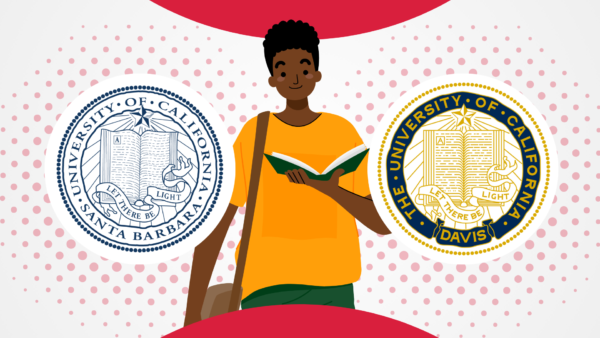
Despite both being schools under the UC system, they offer varied campus experiences to their students, due to their sizes, student population, and campus locations. So, let us look at some of the other factors that can make a prospective student choose UC Santa Barbara or UC Davis.
Location
UC Davis is just a few miles from the capital city of Sacramento, while the closest major city near UCSB is Los Angeles, which is about 100 miles away. UCD is the northernmost campus of the UC system, while Santa Barbara county is considered the northernmost point of the SoCal coast.
Davis is a quintessential college town, renowned for being green, sustainable, friendly and laid back. The Davis downtown is very student-friendly, with college goers biking or walking across the town. Santa Barbara is more suburban, known for its picturesque coastline and idyllic environment. The university campus is located on cliffs overlooking the Pacific Ocean!
While the main UCD campus is located in Davis, the university also has specialised centres in other places. The UC Davis Medical Centre is in Sacramento, an Environmental Research Centre on the shores of Lake Tahoe, a marine lab on the buffs of Bodega Head, a veterinary medical centre in San Diego, and centres in Sacramento and San Francisco that offer part-time MBA programs.
Campus Size and Facilities
The UCSB campus spans over 1,000 acres, nestled between the Santa Ynez Mountains and the Pacific Ocean. Known for its extensive biking system, the campus provides cutting-edge academic facilities, including classrooms, research centres, and libraries. The UCSB Recreation Centre contains two gyms, weight rooms, racquetball courts, a squash court, swimming pools, a pottery studio, and locker rooms. The Multi-Activity Court is also located within the Recreation Centre.
Compared to Davis’ quieter, quainter collegetown vibe, UCSB is renowned both for its idyllic and peaceful beachfront setting and also has a reputation for socializing, partying, and nightlife. This aspect also increases the number of students choosing this campus, for its social life, especially at the undergraduate level.
The main UC Davis campus is immense in size, expanding about 5,300 acres with over 1,100 buildings. To traverse the large campus, students primarily use bikes, e-scooters, and the university bus services. UC Davis is one of the biggest bike schools in the country. The large campus is bustling with student life, with about 39,000 graduate and undergraduate students who call it their home.
Besides state of the art classrooms, research centres, labs, and libraries, the campus provides numerous facilities for its students. The Activities and Recreation Centre (ARC) houses numerous fitness centres, a strength room, exercise studios, a rock wall, multiple courts for various sports, locker rooms, study areas, coffee shop, and a market.
Student Activities and Organisations
Both schools have an extensive culture of athletics and extracurricular activities to help students explore other interests. UCD has 25 varsity teams that compete in NCAA Division I, while UCSB has 19. Both schools also participate in the Big West Conference. In addition, the universities have club sports and other athletic facilities for recreation and fitness. When it comes to student clubs and organizations, UCD has over 800, while UCSB has over 500. UCSB’s student activities also include beach and outdoor sports, creating a scenic backdrop for extracurricular activities.
Housing and Accommodation
Unlike many universities that make on-campus housing mandatory for freshmen students, UC Davis and UCSB do not require students of any year to live on campus. That said, at Davis, about 90% of first-year students choose to live in one of their residence halls or university apartments. Considering the four years of undergraduate study, about 35% of students live on campus, while the number is around 38% at UCSB.
In-campus housing in both schools are typically in the form of dorms or residence halls, undergraduate, and graduate apartments. They also include various recreation centres, student markets, residential academic centres, dining halls, and shared interest communities.
UCD is also working to proportionally increase student accommodation along with its enrollment. Considering that Davis is a college town, there are numerous options for off campus stay as well. Many UCSB students also choose to stay in Isla Vista due to its proximity to the campus and the beaches.
UC Santa Barbara vs UC Davis: Financial Aspects
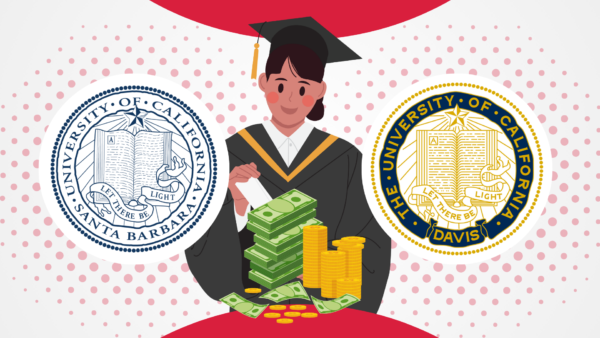
When deciding between the two public universities in the state of California, another important consideration after academics is the finance involved. The cost of tuition, additional expenses, housing, and the nature of scholarships offered are significant considerations to be factored in, before making a choice.
The following table can help you compare these two prestigious institutions in the matters of fees and scholarships.
| Annual Rates | University of California- Santa Barbara | University of California-Davis |
| Tuition (Bachelor’s) | CA Resident – $14,436 Non Resident – $48,636 |
CA Resident – $14,436 Non Resident – $48,436 |
| Tuition (Master’s, not including professional programs) | CA Resident – $14,016 Non Resident – $29,118 |
CA Resident – $15,141 Non Resident – $30,243 |
| MBA Tuition | N.A. | CA Resident – $49,502 Non Resident – $61,747 |
| Housing (On-Campus) and Meal plan | $12,800 – $19,600 | $20,000 – $22,000 |
| Off-Campus Housing | About $15,800 | $10,000 – $15,000 (rent) |
| Types of Financial Aid | 1. Scholarship options, including Regents 2. Grants 3. Loans 4. Work Study |
1. Grants 2. Scholarships 3. Loans 4. Tuition Assistance 5. Work Study 6. Learning Aligned Employment Program |
| International student scholarships |
|
|
| Estimated average grant for an aid student | Around $22,000 | Around $20,000 |
| Demonstrated Need Cover | Offers Blue and Gold Opportunity Plan for California residents whose total family income is less than $80,000 a year | Scholarships and awards for family incomes up to $217,000 |
Here are a few important points to be kept in mind.
- As public universities, UC schools offer subsidised tuition to in-state students. Even without the subsidy, public universities are generally more affordable for out-of-state or international students than privately owned schools.
- The tuition fees are average figures, calculated for a typical academic year of 9 months. The fee will be higher should you choose to take extra courses in the summer months.
- The tuition fee amounts in the table are indicative of only the cost of attendance. It does not include books, student health insurance and other expenses. Student insurance alone can cost between $3,000 – $8,000 a year.
- UC schools’ aid plans are designed for American citizens or permanent residents and are primarily need based. International students typically look for external sources of funding. However, UCSB has a few options for international students.
- International students cannot apply for federal or state sponsored aid.
UC Santa Barbara vs UC Davis: Career Prospects and Alumni Network
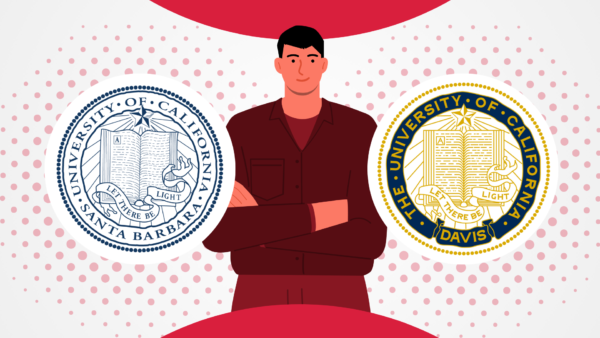
Let us compare the post-graduation outcomes and opportunities in this section.
Employment Ratio
The freshman graduation rate of UCD is about 86%, meaning 86% of students who enter UC Davis graduate with a degree within a 6-year period. While the employability rate varies with each department, the Davis Graduate School of Management has a success rate of over 90%. If you look at the UCSB, about 80% of the graduates who were seeking employment were employed within six months. The six year graduation rate is around 85%.
Notable Alumni
Both universities have vibrant alumni associations that extend worldwide. UCD’s alumni network, the Aggie Network, supports over 312,700 alums, while SCU has over 250,000 living alumni worldwide.
Notable Alumni from UCD
- Charles Rice, Virologist and Nobel Prize Laureate
- Hasan Minhaj, Comedian and TV host
- London Breed, Politician
- Ryan Roslansky, CEO of LinkedIn
- Tracy Dyson, Chemist and Astronaut
Notable Alums of UCSB, besides the 6 Nobel Laureates who were/ are members of UCSB faculty
- Robert Ballard, Discoverer of the Titanic
- Angela Belcher, Material Scientist
- Leroy Chiao, Astronaut
- Michael Douglas, Oscar-Winning actor and Producer
- Logan Green, CEO and Co-founder of Lyft
Career Services
Both universities have exclusive centres that help their students and alumni meet their career goals. They aid their students to gain practical experience, build networks and communicate their aptitudes and skill sets to prospective employers. They also play an instrumental role in building leadership skills and specialised skills that are essential to a workplace.
These services typically connect students to internship opportunities and prospective employers through seminars, job fairs, and numerous other on-campus events. They also provide access to Handshake, where students can directly connect with prospective employers. UC Davis also has options to join professional associations or try out job shadowing that allows students to build networks with members of the industry.
Conclusion
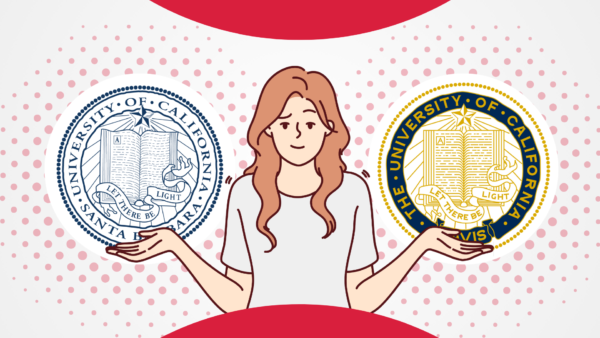
Choosing between two UC schools involves considering various factors such as academic strengths, campus life, financial implications, and career prospects. Both universities offer unparalleled opportunities, but your decision should align with your personal and professional goals.
They are bound to have some similarities, considering they both function under the UC system, but here is a summary of the key distinctions.
- UC Davis ranks marginally higher when compared to UCSB.
- UCD is also a larger school, in terms of campus size, undergraduate, and graduate student population.
- Davis has more options to choose from, especially at the graduate level since it has a dedicated school of medicine, veterinary medicine, nursing, law, and business. UCSB is better suited for the pre-professional track.
- UC Davis has a larger research budget when compared to UCSB.
- Davis has an impeccable reputation for biomedical sciences, agriculture and forestry programs and engineering, among others. UCSB, due to its location, is more renowned for marine sciences and ecology courses while also a top contender when it comes to social sciences and humanities.
- Davis is a quaint college town that is relatively quiet, but also provides easy access to Sacramento. In contrast, Santa Barbara is known for its scenic coastal views and has a reputation for party and nightlife.
While these can be factored into your decision, the ultimate call rests on whether the course curriculum and the learning outcomes meet your career plans. The most significant part of your research is to compare courses, syllabi, electives, faculty and research facilities of your preferred degree program, speak to current students, and then decide depending on which school better suits your needs.
We understand that becoming an international student can be very thrilling, but the prep and paperwork of it all can get overwhelming. The easiest way to reduce your stress is to sign up with TC Global.
We simplify international education, learning, and mobility through connecting students, universities, and a global community on a single platform where there are over 1000+ education providers and over 80,000+ courses.
Our platform enables students to study anywhere in the world in just a few steps. From search and discovery and finding the right course fit for you, to applications, visas and departure – we see you through it all.
To move forward with us, download our app or visit tcglobal.com and sign in to create an account on our student platform and onboard with us in quick, easy steps.! 🚀
Then simply set up a visit Calendly.com/tcglobal to pick a Relationships Team closest to you and choose a slot to meet with a Relationship Member. Be it UC Santa Barbara vs UC Davis or any such debates, our experts will be with you every step of the way to help you decide.
Let’s shape your future together.
FAQs
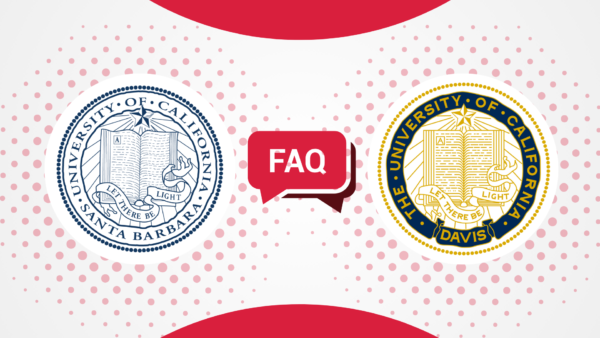
Is UC Davis or UC Santa Barbara harder to get into?
If you are looking at overall acceptance rates, UCSB is around 25 – 26% while UC Davis is around 40%. However, these numbers can vary based on departments and popular programs.
Is UC Santa Barbara a prestigious school?
Ranked 35 out of over 430 universities in the United States, UCSB is a highly regarded university. More renowned for its undergraduate programs, especially in the areas of social sciences, marine sciences, communication and ecology, it is widely accepted as an excellent school.
Which is the best UC in California?
Among all the universities under the University of California system, UC Berkeley tops the list, closely followed by UCLA.
Which is better, UCSD or UCSB?
By ranking alone, UC San Diego stands 28th in the country, tied with UC Davis, while UC Santa Barbara ranks 35th. Here is an article that gives you a detailed comparison of the two schools – UCSD VS UCSB.
What GPA is required for UC Santa Barbara?
In-state students require a minimum GPA of 3.0, while out-of-state and international students require 3.4 or higher.
Which one is better – UC Davis or UCLA?
UCLA consistently ranks higher than UCD across almost all disciplines except agriculture and veterinary sciences.
Is UC Davis a top ten school?
UCD ranks 6th among the top 10 public universities in the US, according to US News. When comparing both public and private universities, USD ranks 28th.
What is UCSB most popular major?
Top choices include Sociology, Econometrics, Communication, Experimental psychology. Environmental Studies, Biological Sciences, Statistics and Global Studies.
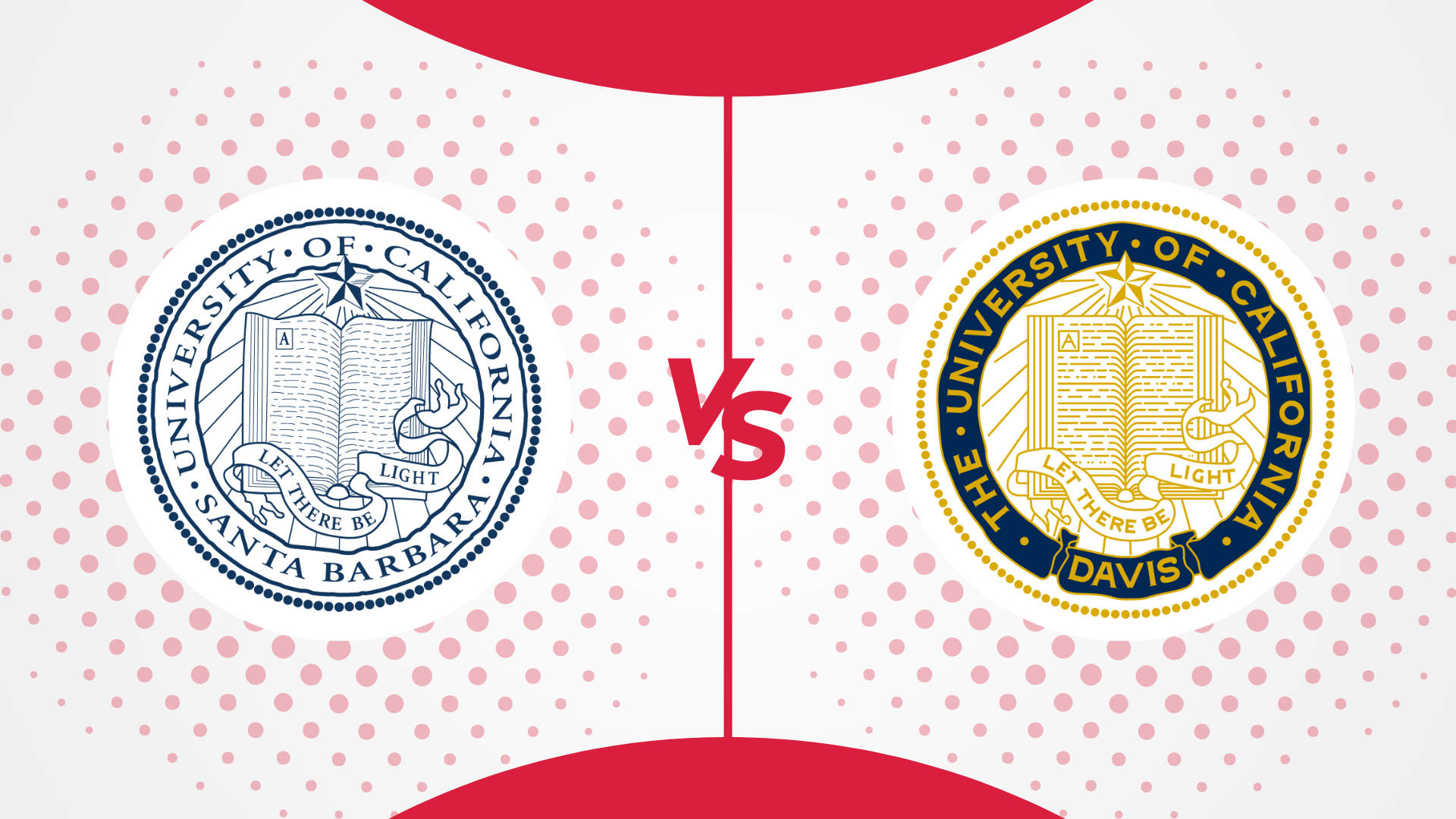
Compare more universities in USA
-
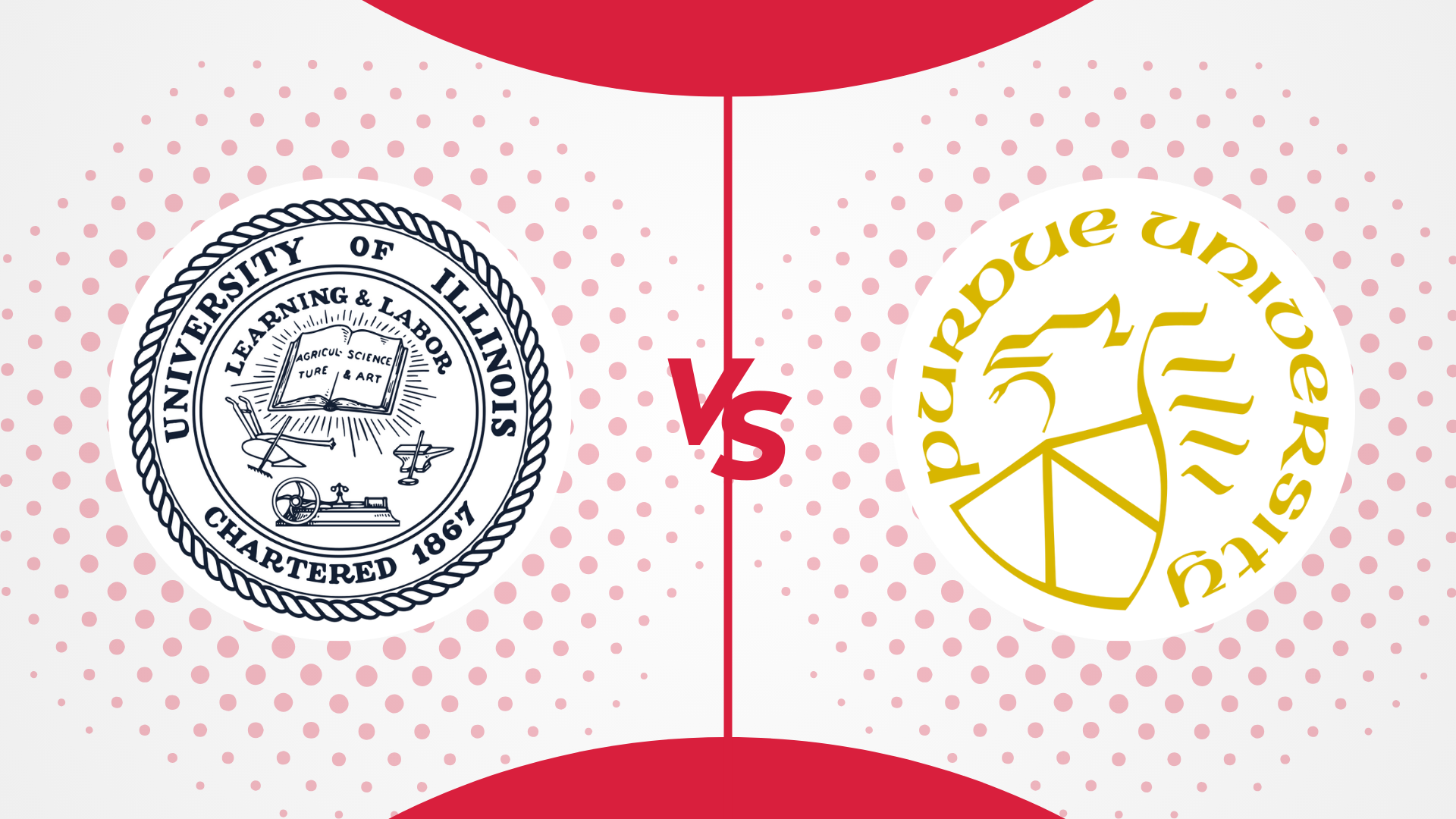
Purdue vs UIUC: How Do They Compare in 2025?
December 16, 2024 -
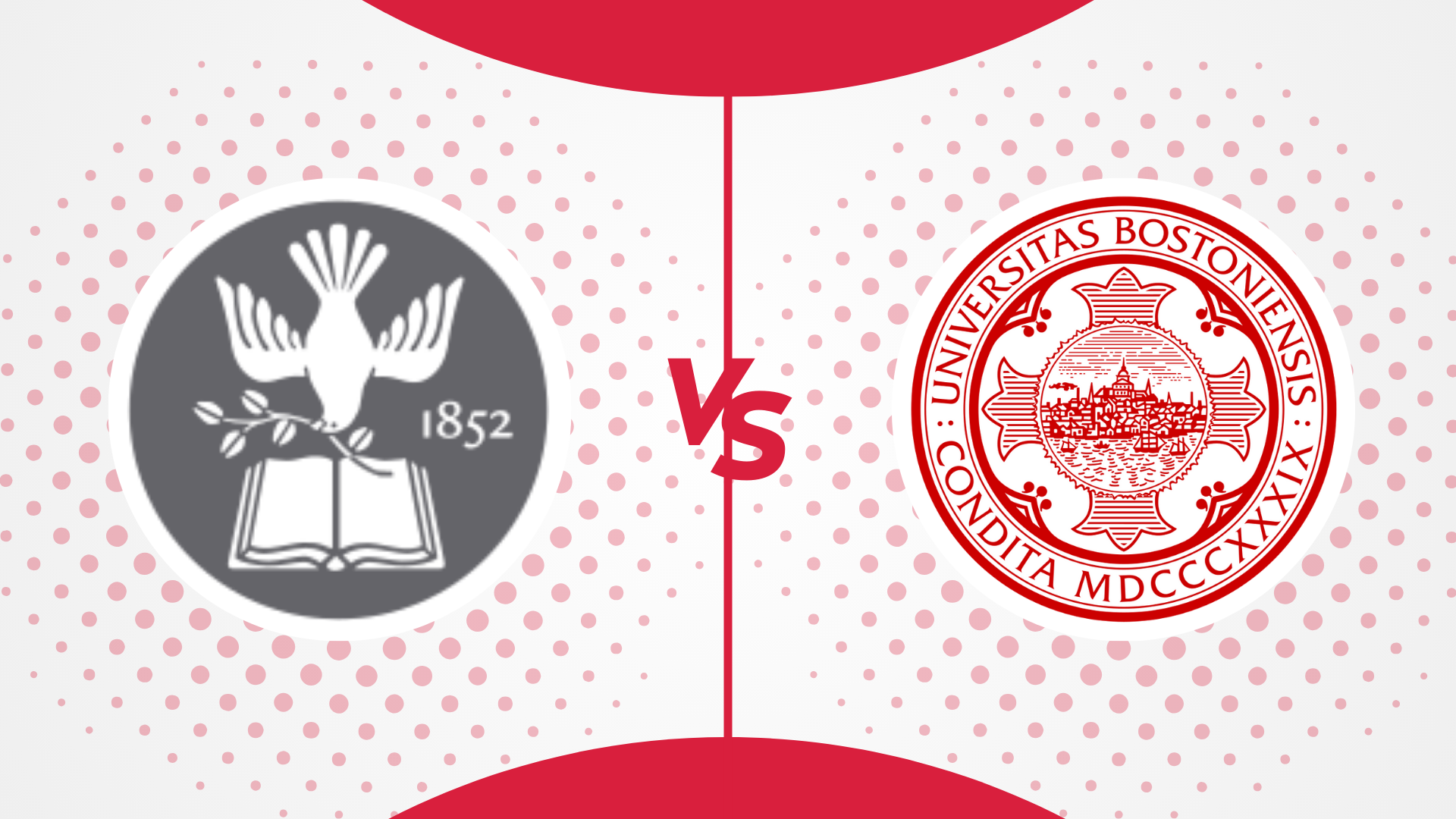
Tufts vs BU: How Do They Compare in 2025?
December 16, 2024 -

UIUC vs Georgia Tech: How Do They Compare in 2025?
December 3, 2024 -

Georgia Tech vs UT Austin: How Do They Compare? [2025]
September 24, 2024 -

UC Davis vs UC Irvine: How Do They Compare in 2024
September 10, 2024 -
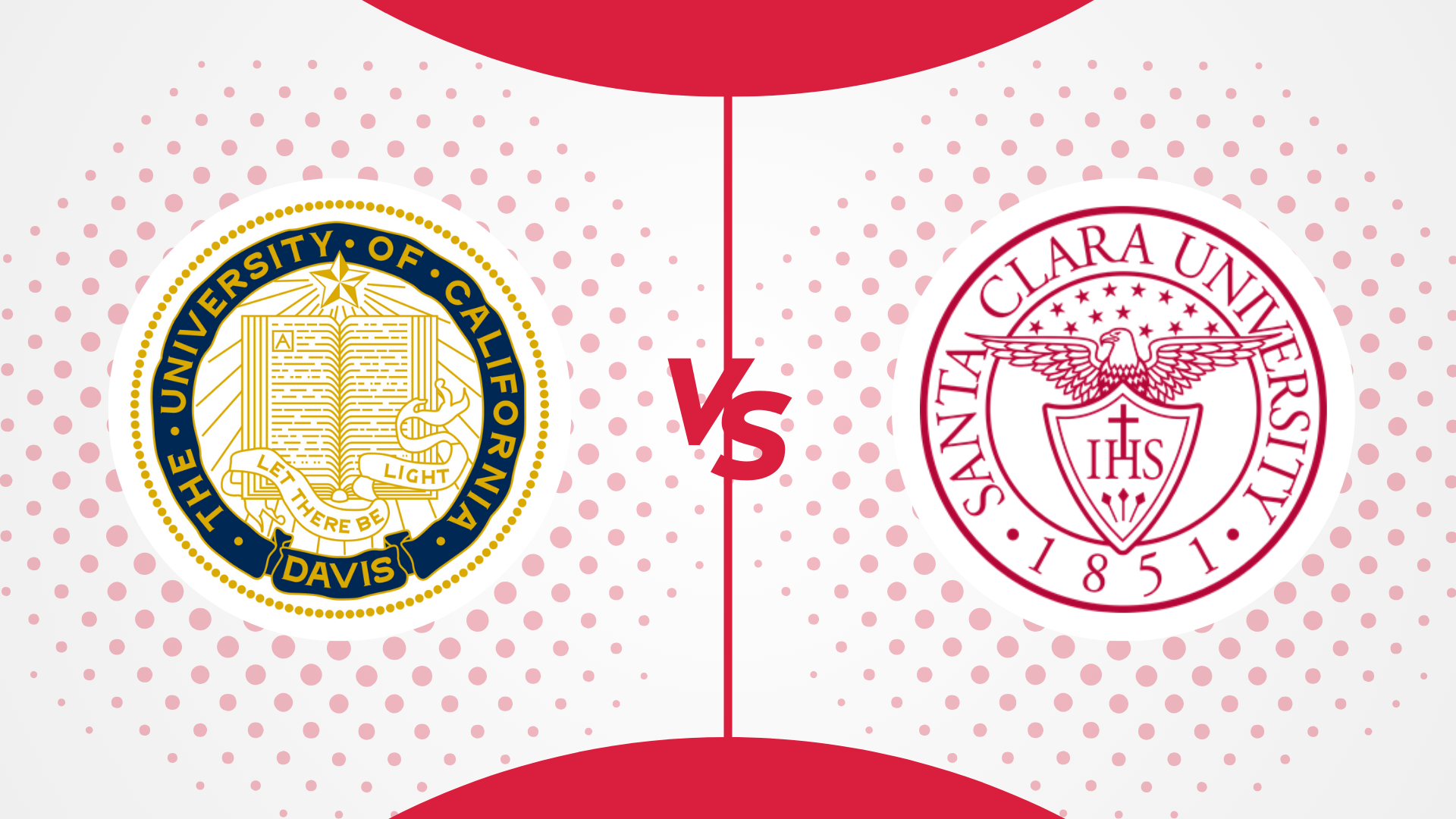
UC Davis vs Santa Clara University: How Do They Compare? [2024]
August 23, 2024 -

University of Chicago vs Northwestern University: How Do They Compare
August 20, 2024 -

Georgia Tech vs MIT: How Do They Compare? [2024]
August 7, 2024 -

Caltech vs MIT: How Do They Compare [2024]
August 2, 2024 -

MIT vs Harvard: How Do They Compare [2024]
July 27, 2024 -

Cornell vs Harvard: How Do They Compare? [2024]
July 27, 2024 -

Yale vs Harvard: How Do They Compare [2024]
July 22, 2024 -

Harvard vs Princeton: How Do They Compare [2024]
July 16, 2024 -
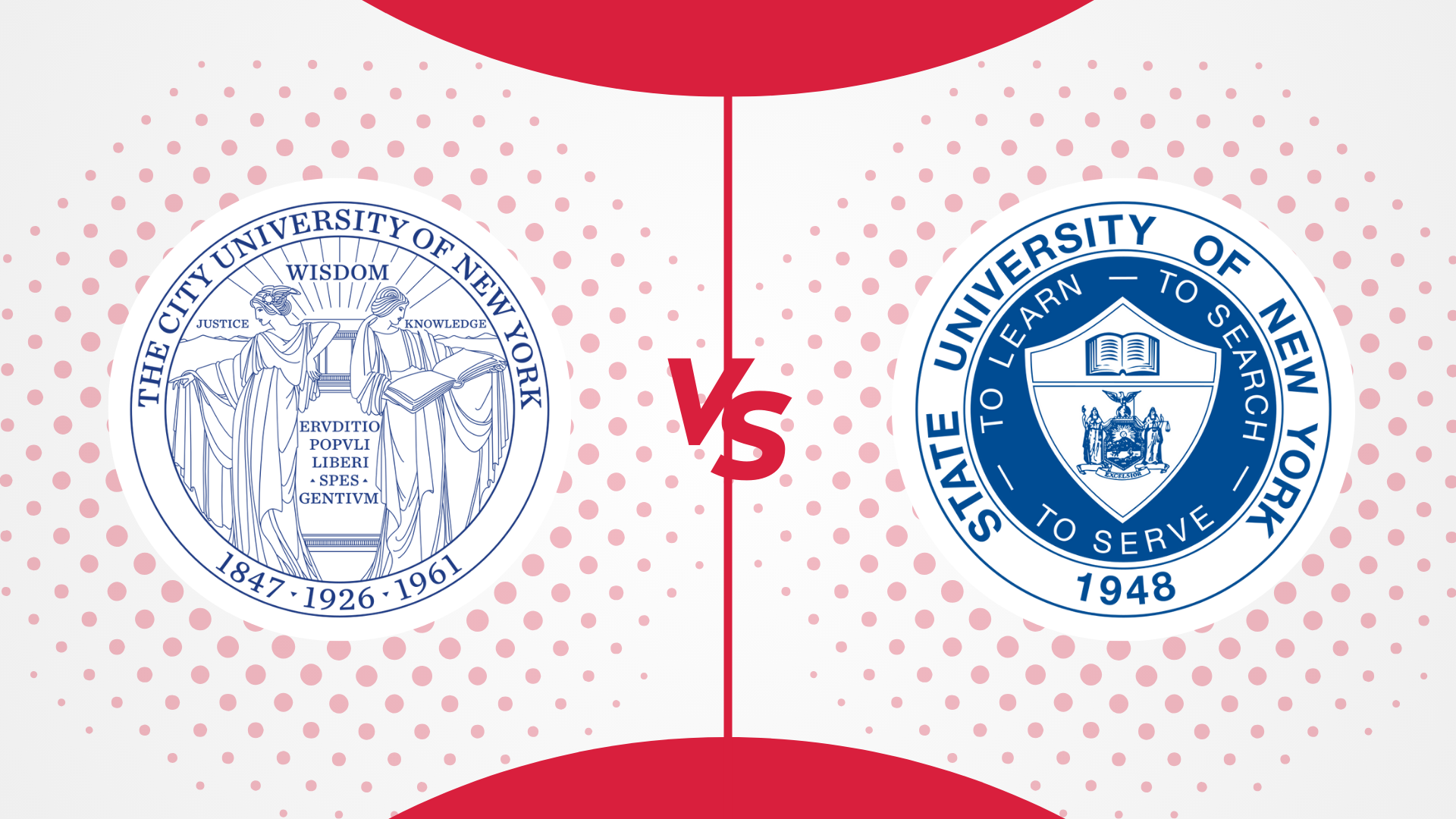
CUNY vs SUNY: Which One is For You in 2024
July 9, 2024 -
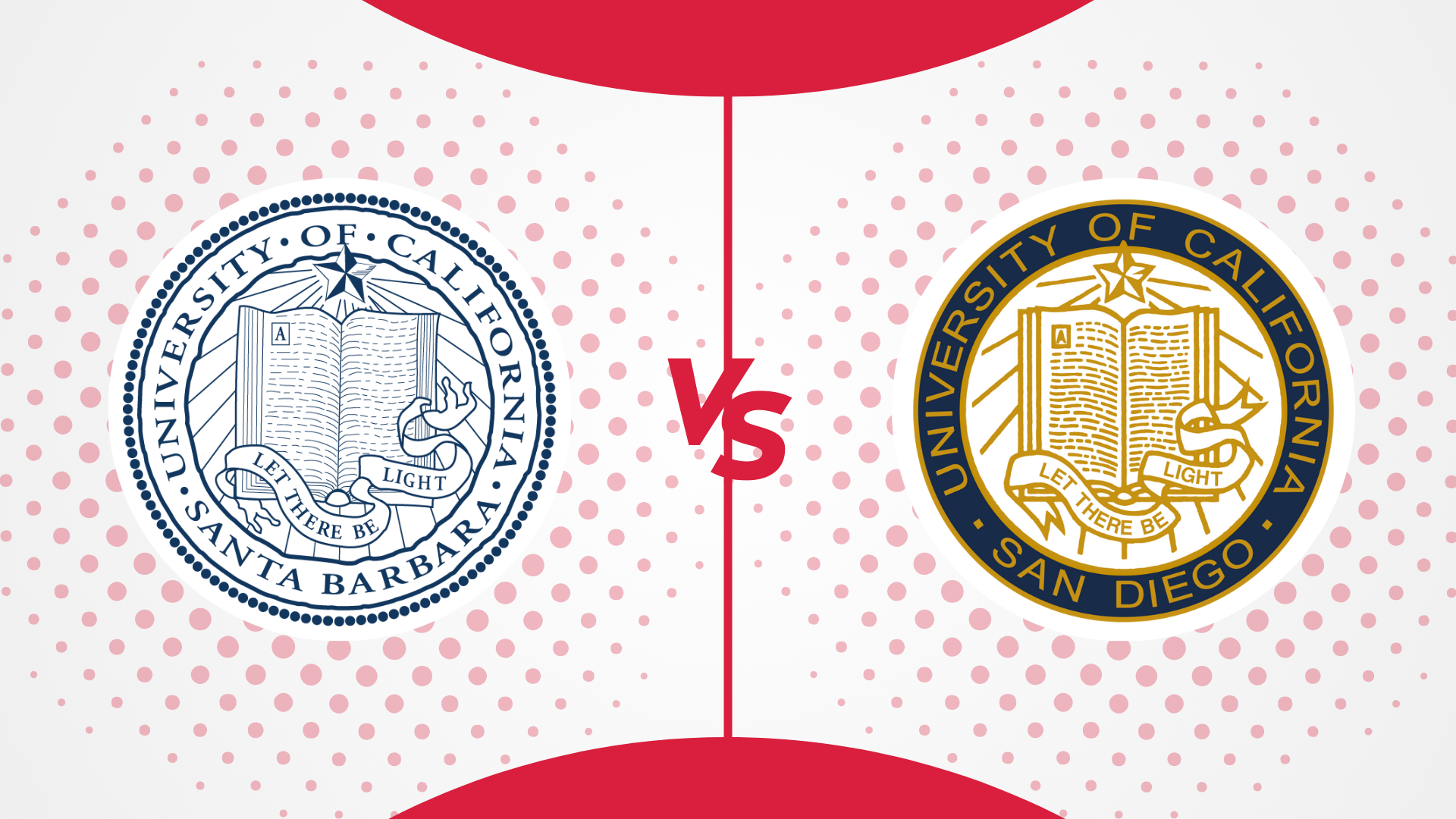
UCSD VS UCSB: Which One is Better For You in 2024
July 9, 2024 -
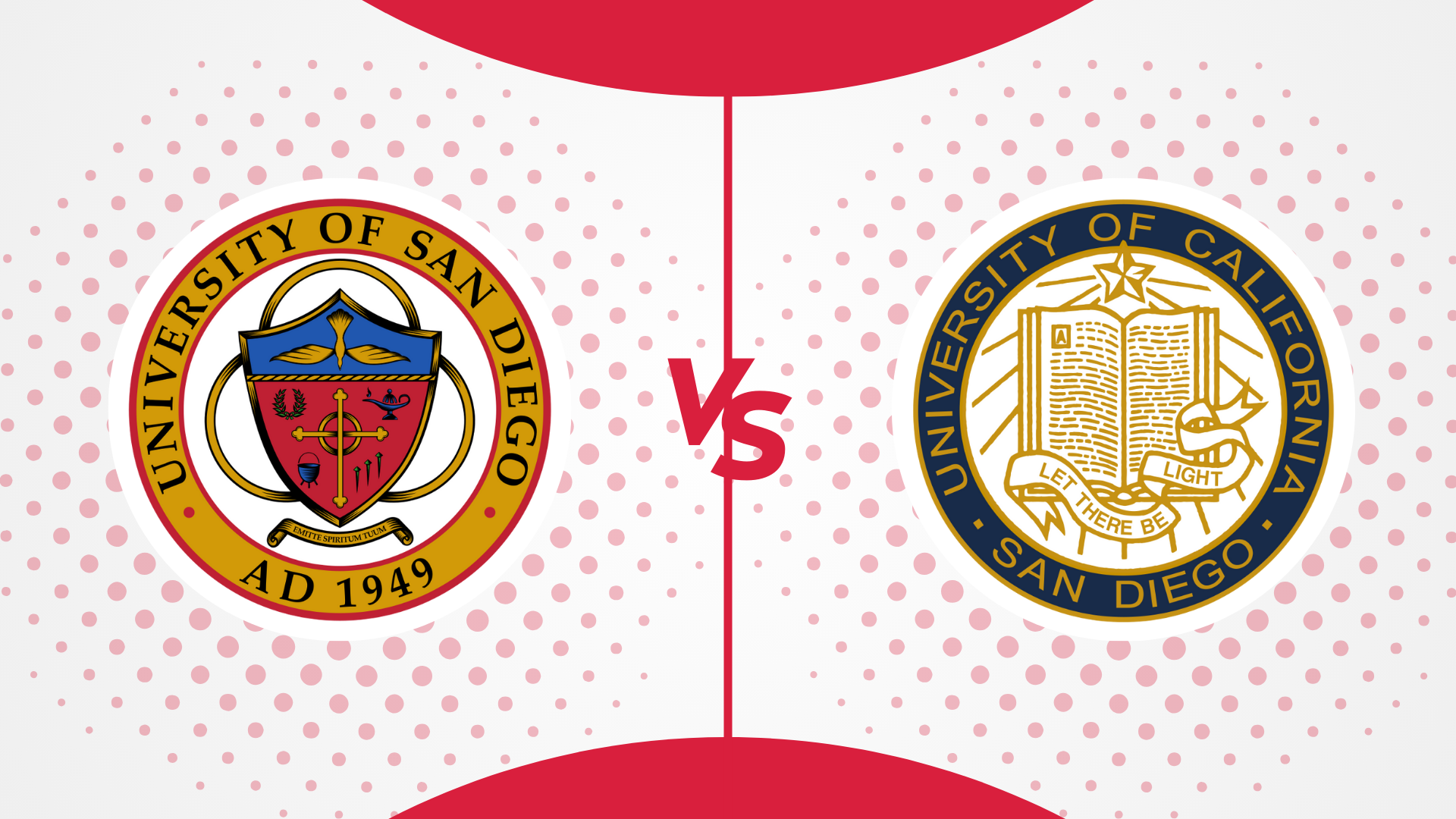
USD vs UCSD: Which one should you choose in 2024?
July 9, 2024 -
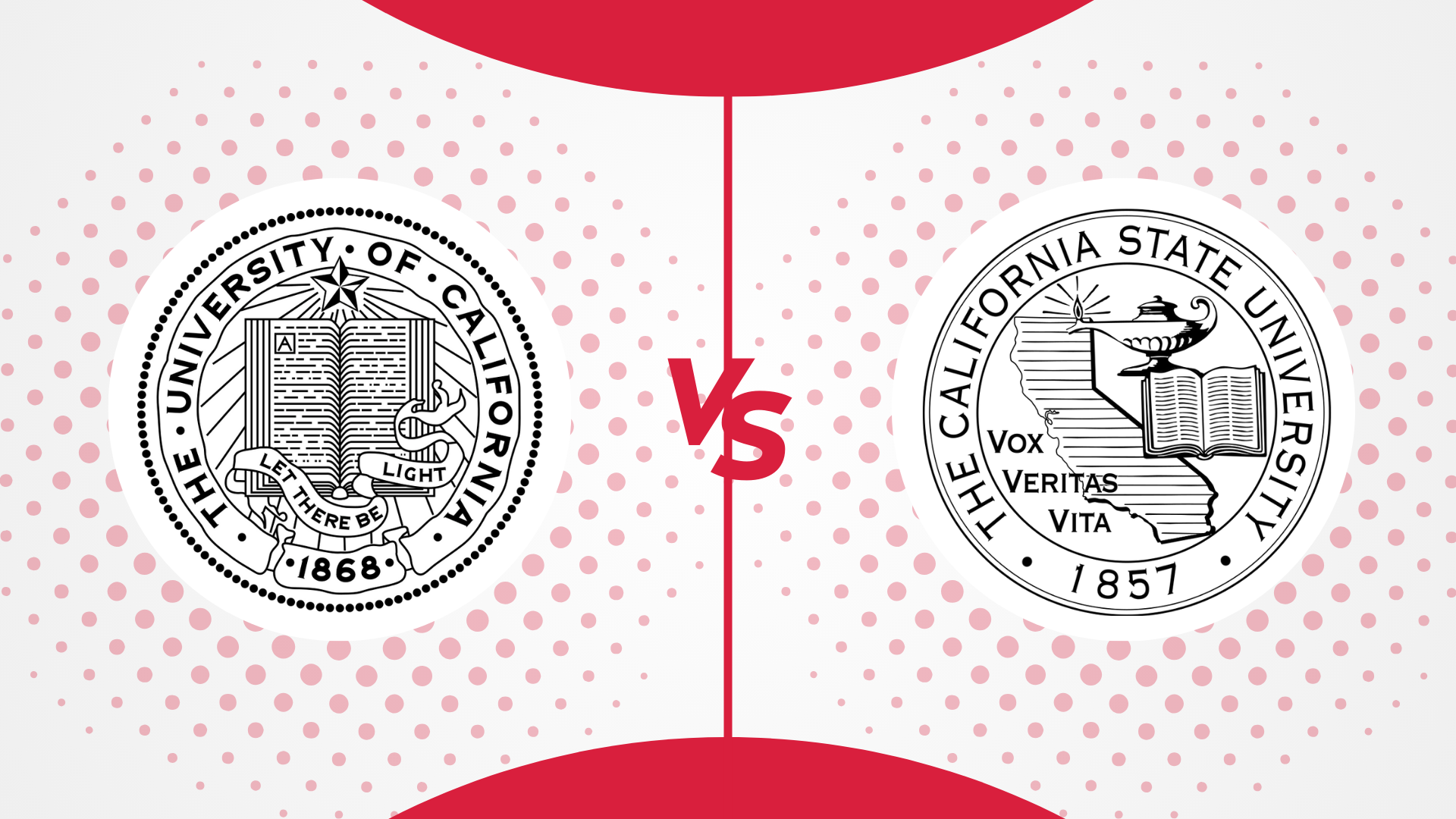
UC vs CSU: Which One is Better in 2024?
July 9, 2024 -
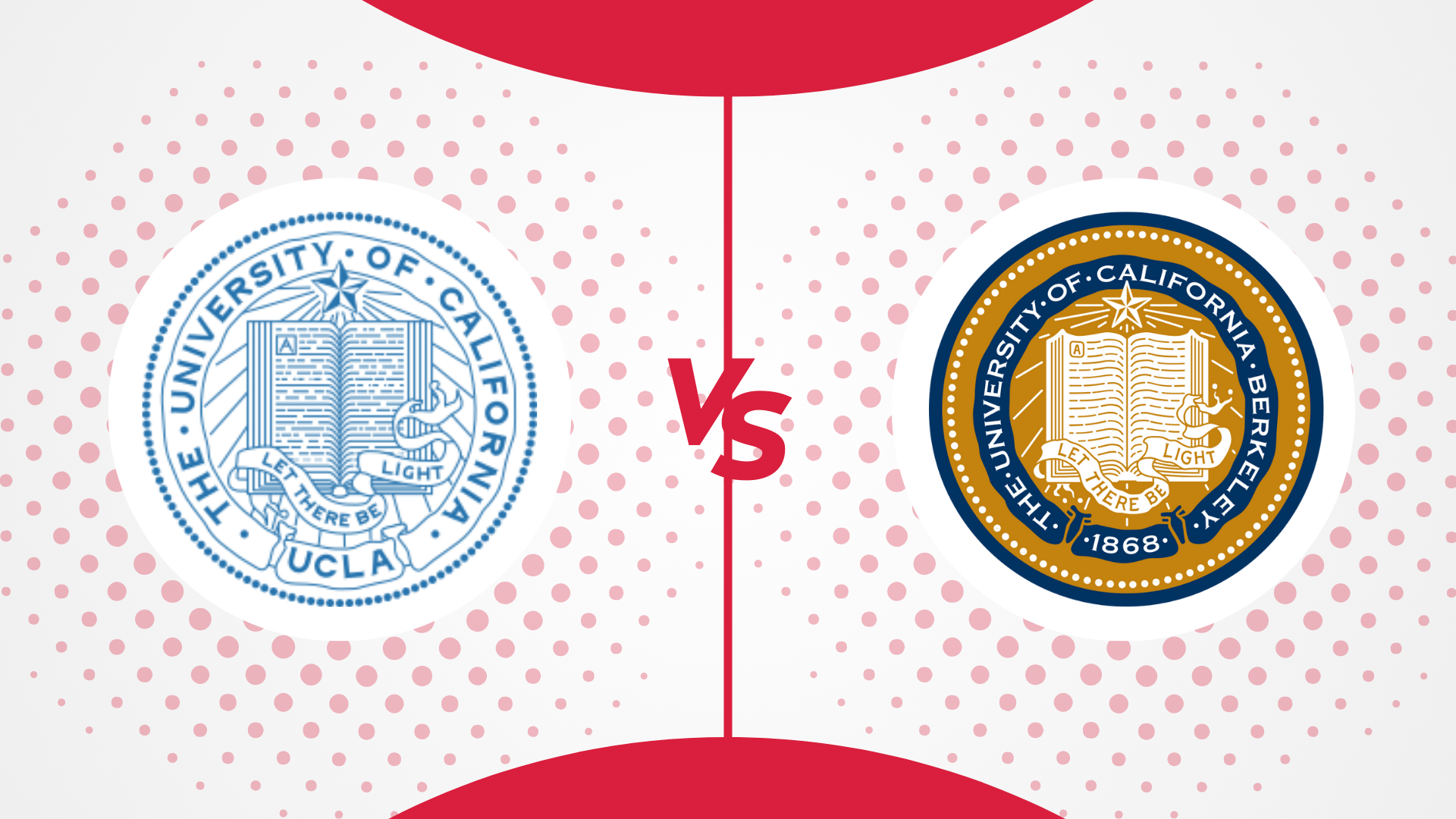
UCLA vs UC Berkeley: Which One is Best in 2024
July 9, 2024 -

University of Arizona vs Arizona State University: Which One is Better in 2024
July 9, 2024 -

Penn State vs UPenn: Which is Better for International Students in 2024
July 9, 2024 -

Northeastern vs Northwestern: Which One is Best in 2024
July 9, 2024 -

Northeastern University vs Purdue University – Which One is Better in 2024?
July 9, 2024 -

Boston College vs Boston University: Which One is the Best in 2024?
July 9, 2024 -

LSU vs UCLA: Which Is Better For You In 2024?
July 8, 2024 -

NYU vs Boston University: Which One Is Better For You In 2024
July 8, 2024 -

USC vs UCLA: Which One Is Better For You In 2024?
July 5, 2024 -
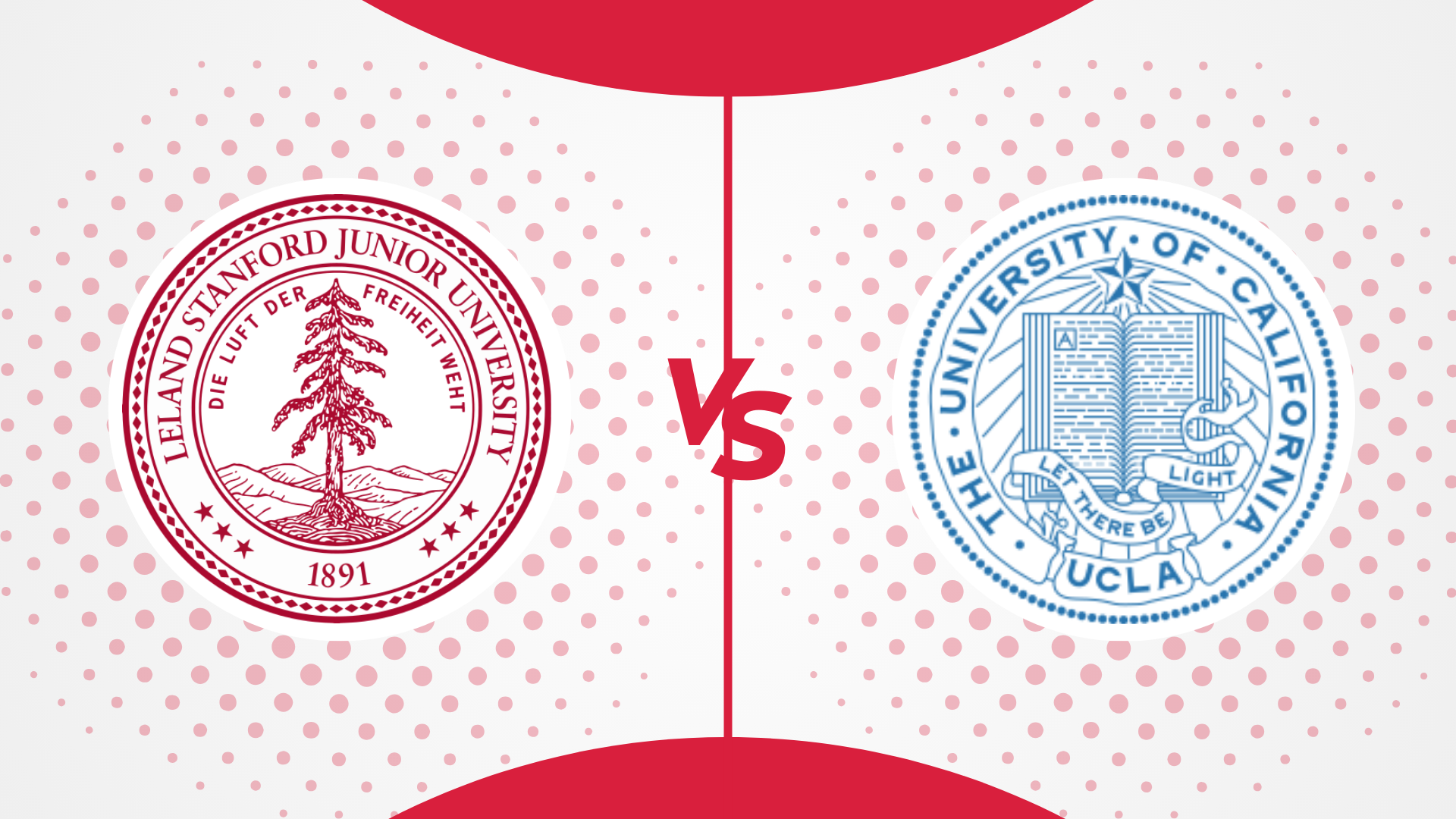
Stanford vs UCLA: Which One is Better For You in 2024
June 28, 2024 -
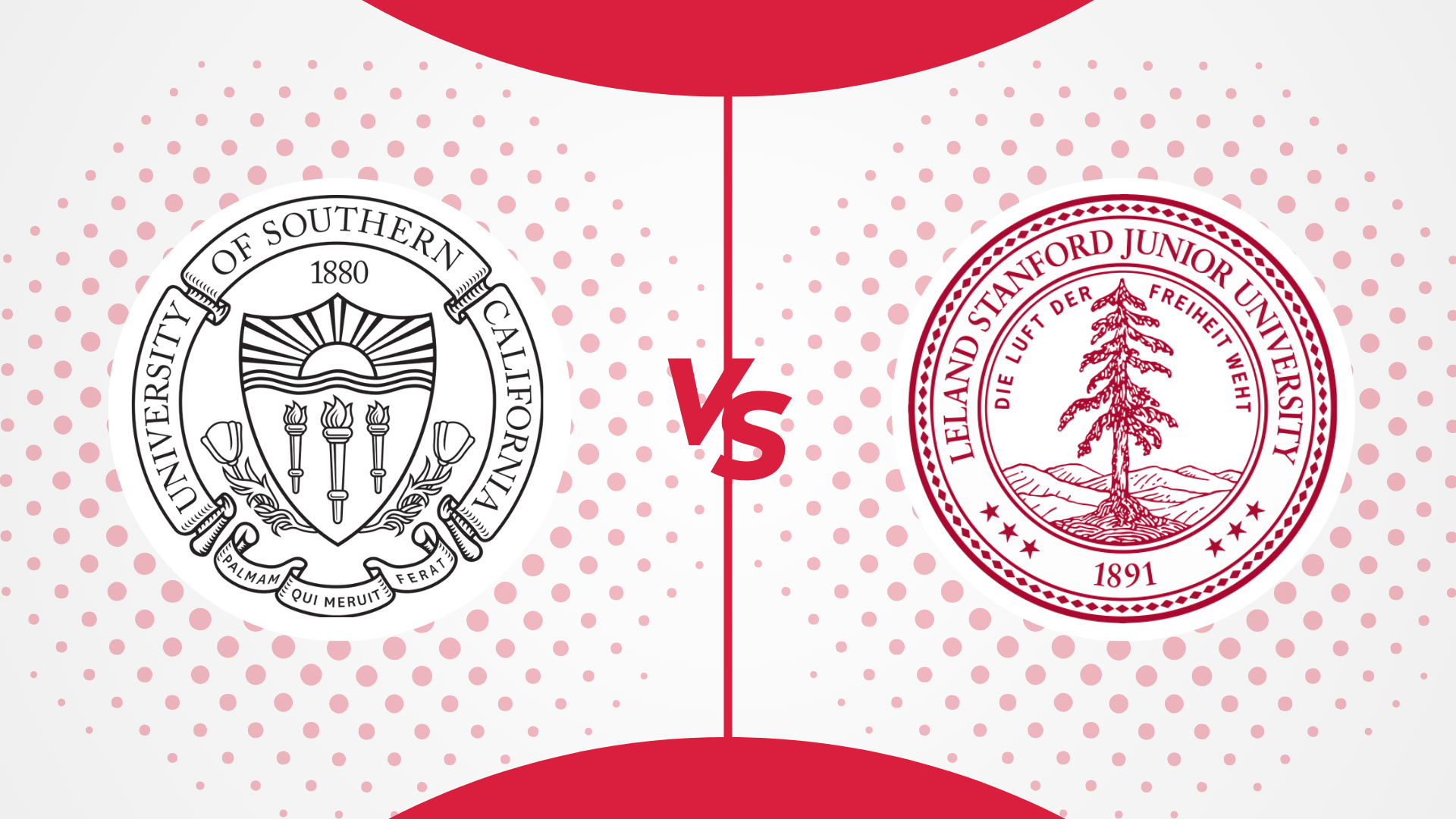
USC vs Stanford: Which One is Better For You in 2024
June 28, 2024 -
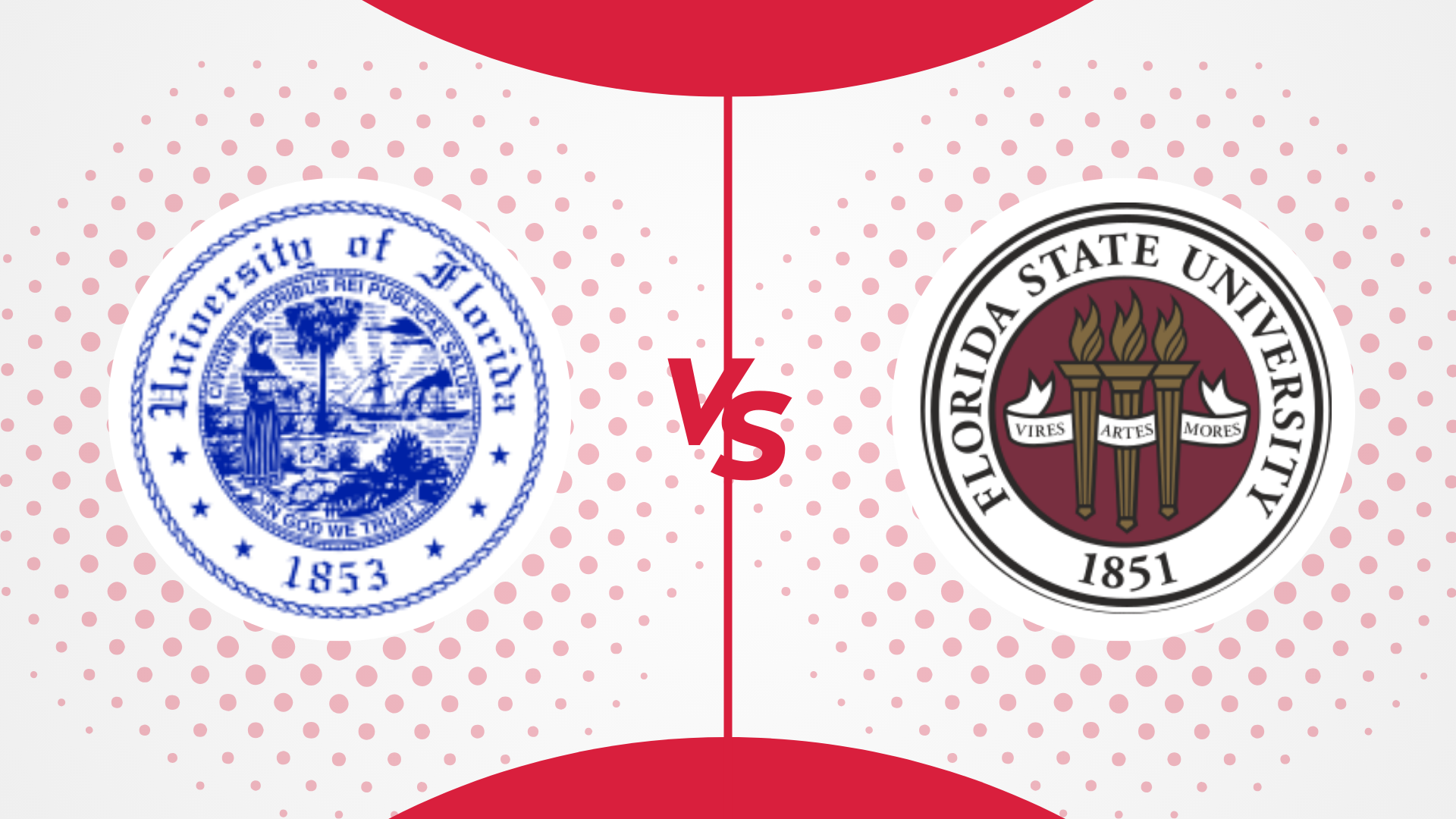
University of Florida vs Florida State University: Which One is Better For You in 2024
June 28, 2024 -

NYU vs Columbia: Which Is Better In 2024?
June 28, 2024 -

Princeton vs Columbia: Which Is Better In 2024?
June 28, 2024 -

NYU vs Cornell: Which One Is Better In 2024?
June 28, 2024 -

Boston University vs Northeastern: Which one is best in 2024
June 28, 2024 -

NYU vs UCLA: Which Is Better For You In 2024?
June 28, 2024
